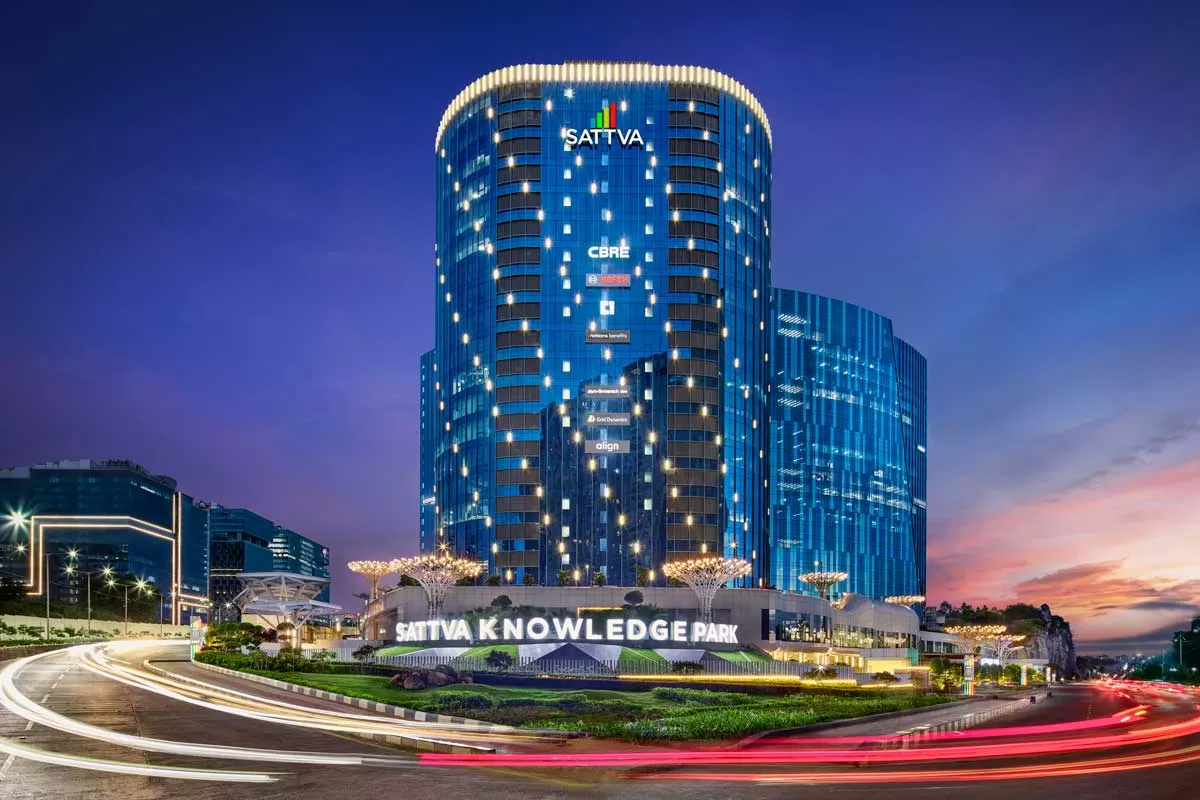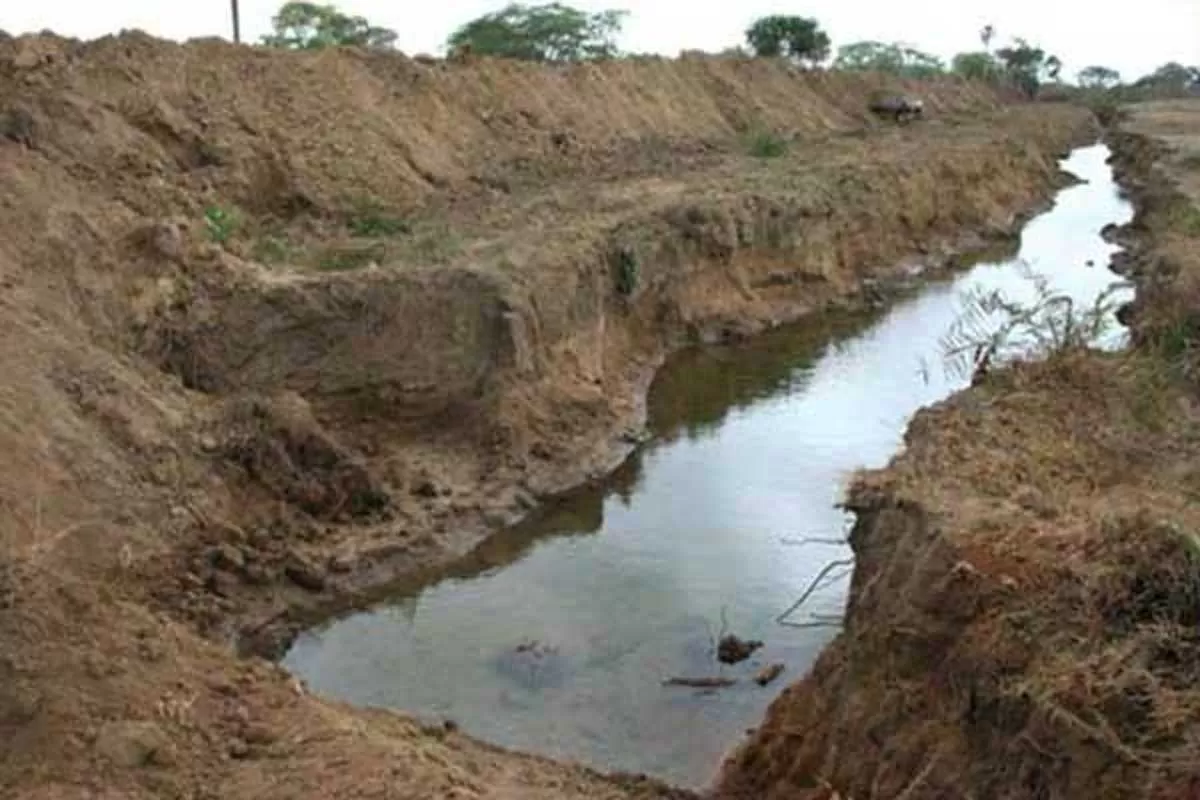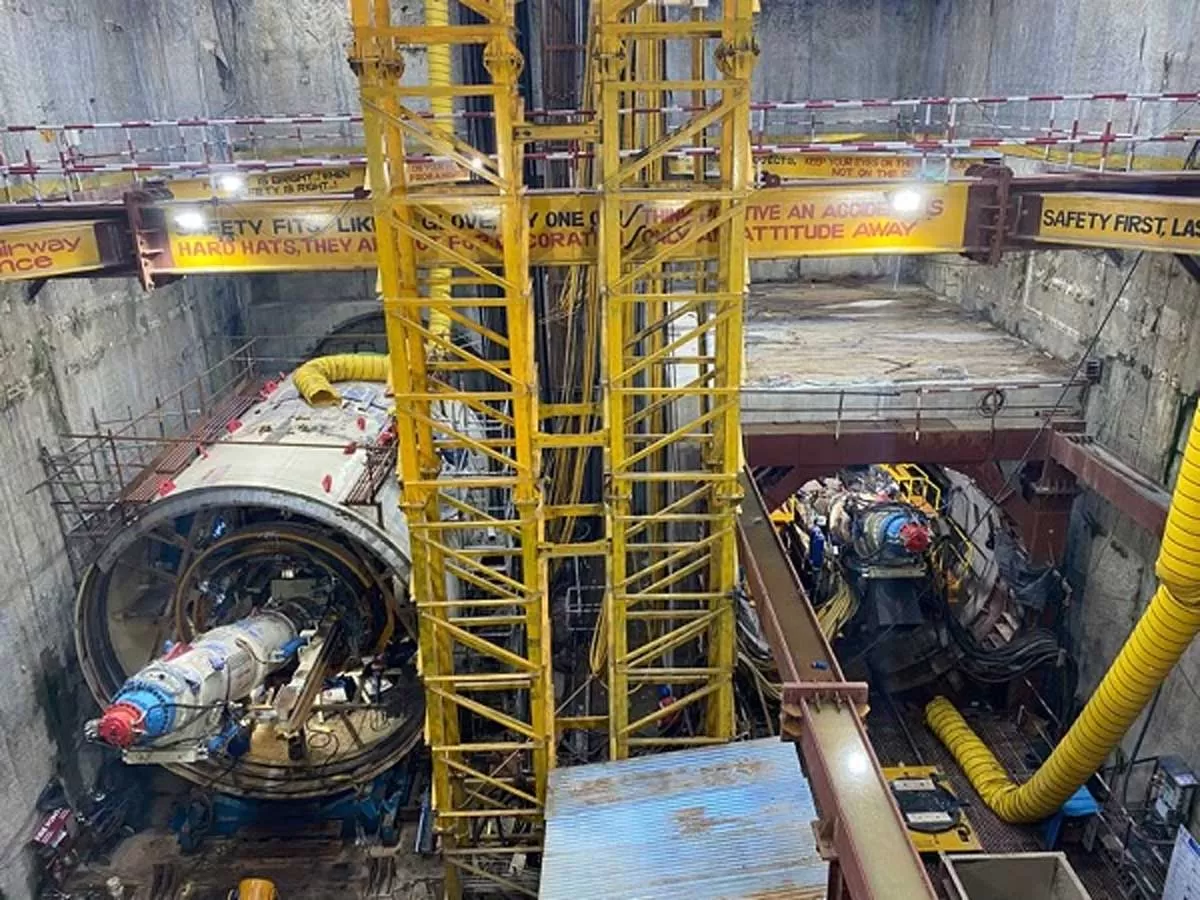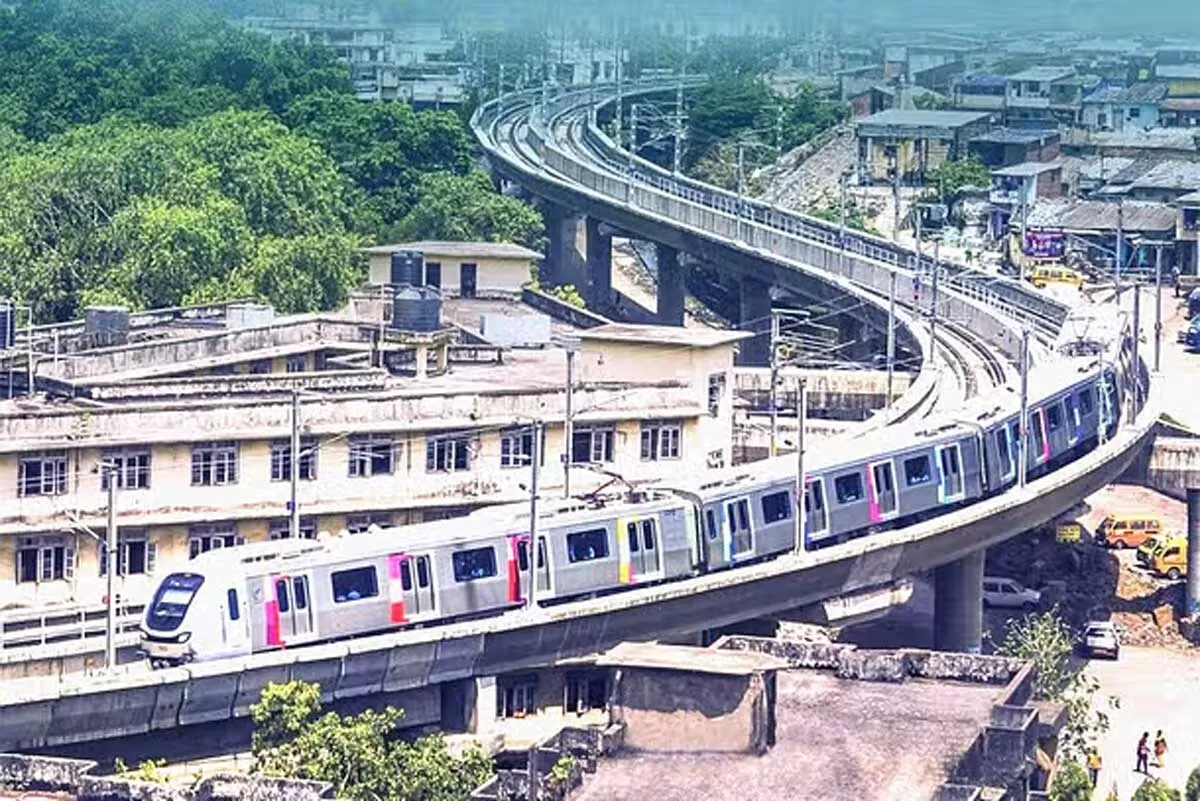In 2025, India’s real-estate market will be driven by a confluence of economic, demographic and policy-driven factors. Among these, Boman Irani, President, CREDAI National, counts rapid urbanisation, the rise of the middle class, policy reforms like RERA and GST rationalisation, and the Government’s decision to allow 100 per cent FDI in construction development projects (including townships, housing, built-up infrastructure, and real-estate broking services).In the top metros, especially Bengaluru, followed by Hyderabad and Pune, the key drivers will continue to be job creation and wealth generation, says Gulam Zia, Senior Executive Director - Research, Advisory, Infrastructure, and Valuation, Knight Frank India. “The Government’s focus on employment-generating Global Capability Centres (GCCs) will play a crucial role. These cities are benefiting from the growth of GCCs and data centres, both of which are major job creators. While the stock market has seen some subdued performance recently, job creation remains on track, supporting the sector’s growth.”India’s office market is being driven by the ongoing diversification of the demand base and healthy Grade-A space uptake by GCCs as well as domestic-origin companies, says Badal Yagnik, CEO, Colliers India. “The year 2025 is likely to witness annual gross leasing to the tune of 65-70 million sq ft. Additionally, around 60-65 million sq ft of new supply is anticipated.”Essentially, the policies of both the Centre and state governments are supportive. As an example, Rohit Reddy, Founder and Managing Director, Signature Developers, cites the Telangana State Industrial Project Approval and Self-Certification System (TS-iPASS), a policy introduced by the Telangana government providing single-window (and hence, speedy) clearance for real-estate developments, including integrated townships and smart homes.Defining trendsPropelled by these drivers, the defining trends this year are likely to be a shift towards sustainability and smart living, followed by hybrid workspaces – especially in tech and innovation hubs – affordable housing and integrated townships, according to Prashant Sharma, President, National Real Estate Development Council (NAREDCO) Maharashtra.Anupam Verma, CEO, Kapstone Constructions, cites the seamless integration of technology into real estate as another defining trend in 2025.Here’s a look at these and other sectoral developments.Affordable housingYagnik expects the recent repo rate reduction of 25 basis points and elbow room for further rate cuts in 2025 to provide a boost to the affordable housing segment.Essentially, the RBI’s repo rate reduction will improve the availability of credit and reduce borrowing costs for developers and homebuyers, says Irani, thus spurring demand, particularly in the mid-income and affordable housing segments. Incidentally, affordable housing needed budgetary intervention but not much was introduced in that regard, says Zia. On the other hand, he notes that the sector hasn’t been very active in affordable housing but is hopeful it will make a comeback, with home loan subsidies and government incentives kicking in. “PMAY 2.0, launched in October 2024, is expected to start showing results,” he adds.Integrated townshipsToday’s homebuyers seek integrated townships that seamlessly blend residential, commercial and recreational spaces, offering convenience, security and sustainability, says Harshavardhan Neotia, Chairman, Ambuja Neotia Group.“In the market we’re involved in, Hyderabad, we see buyers becoming more discerning and their preferences evolving towards integrated townships, partly fuelled by the rise of hybrid work models,” says Reddy. “In growth hubs like Kokapet, Tellapur and Shamshabad, townships are being developed with seamless access to metro stations, highways and business districts.”Developments like Rustomjee Urbania and Rustomjee Global City have redefined urban living by blending residential, commercial, educational and recreational spaces. Tech and sustainability invasionWithin integrated townships, buyers want smart homes equipped with automation, security solutions and sustainability-enhancing features like energy-efficient systems, solar panels and rainwater harvesting solutions. The evolving work-from-home culture and the rise of the gig economy are reshaping residential preferences, leading to higher demand for larger 4BHK apartments that accommodate flexible working and learning spaces.Rising pollution levels are making eco-friendly homes and green spaces necessities rather than luxuries, according to Neotia. “As the sector evolves, the key will be to balance innovation, cutting-edge technology and sustainability through eco-conscious green spaces and integrated townships, ensuring spaces that enhance not just living but the experience of life itself.”Future-ready projects integrating reliable high-speed Internet and IoT-enabled solutions that enhance convenience and security will stand out. Rustomjee has also been proactive in adopting sustainable and future-ready features, ensuring that its projects not only meet the current expectations of homebuyers but also anticipate their evolving needs. For instance, with the rise of electric vehicles (EVs), homes with EV charging infrastructure are also becoming a key differentiator.Technology can not only enter real estate through smart homes but also through digital transactions or AI-driven property management, says Verma. And Irani says, “The adoption of PropTech, AI-driven analytics and smart infrastructure solutions will become industry norms. Cutting-edge technology such as blockchain for secure transactions, AI-powered customer service and virtual property tours will enhance transparency and efficiency in buying and selling processes.”Sharma sees the increasing digitisation of transactions and adoption of technology as boosting transparency and efficiency.The need to integrate sustainability and technology in real estate is defining architectural trends, believes Viswa Pratap Desu, COO, Brigade Residential. “The materials used, the building’s green certification and the impact of construction on the environment are the focus. The use of advanced technologies like AI and machine learning are pushing the boundaries of innovation in architectural design to create climate-conscious, green buildings. These trends tilt more towards functionality, pleasing aesthetics and environmentally responsible architecture.”Premium developmentsThe luxury market has dominated the real-estate narrative of late. PropEquity reports that the absorption of residential real estate in Tier 1 cities surpassed new supply by 15 per cent in the calendar year 2024, and these cities also experienced a surge in demand for luxury and smart homes, accounting for over 20 per cent of the luxury segment’s supply among Tier-1 cities, according to Shivam Agarwal, Vice President - Strategic Growth, Sattva Group. Resonating with this trend, Sattva saw a growing appetite for premium and luxury housing. “The luxury segment is particularly thriving,” agrees Aakash Ohri, Joint Managing Director and Chief Business Officer, DLF Home Developers. “The luxury segment demonstrates notable price inelasticity and sustained growth potential, largely unaffected by market fluctuations.”First-time buyers are now in their early 30s, while luxury homebuyers have shifted to the 40s age bracket, and ultra-luxury buyers typically fall in the 40s and above, he continues. This shift is driven by high disposable incomes, double-income families and wealth generation from entrepreneurial ventures, indicating a significant change in the buying landscape.Also, NRIs are showing increasing interest in investing in India, says Ohri. “India’s strong economic growth, growing global standing and stable investment environment have enhanced the credibility of Indian real estate. Uncertainties in other global markets are also encouraging NRIs to invest back in their country for future security.” Pointing out that DLF has significantly enhanced its focus on high-end, luxury properties, he says, “We are committed to delivering unparalleled lifestyles with top-tier amenities, facilities and hospitality.In fact, DLF is on the verge of launching a project in Mumbai. News has it that the project will be located in Andheri (West), and is a Slum Rehabilitation Authority (SRA) venture being developed in partnership with the Trident Group. “Approval cycles are underway in both Mumbai and Goa,” confirms Ohri. “Our current reading is that it looks that the Mumbai approval should come hopefully in the next few weeks and we should be able to launch it.”“It’s a premium plus product,” he further elaborates. “We’re going to bring the DLF lifestyle there. It’s going to have the DLF kind of clubhouse and the services available. And it’s 1,100 to 1,500-odd sq ft.” In Mumbai, DLF will be launching in 900-odd thousand sq feet, although Ohri says, “Frankly, the way we are accumulating the entire area, I think that number itself should, hopefully, over time be significantly higher and that will keep us busy for maybe the next few years in the city.”In 2025, Desu expects the demand for luxury housing to continue its upward trajectory, driven by high-net-worth individuals and NRIs. “Demand is also increasing and will continue to increase from younger, under-40 discerning consumers, who desire not just a home but a comfortable, spacious space that reflects their lifestyle and values, and are willing to invest significant sums on experiences that reflect this.”Verma expects the new tax regime to free up more disposable income, allowing buyers to look beyond necessity-driven purchases and invest in quality living spaces.SM REITsREITs introduced the real-estate sector to an alternative form of financing but small and medium REITs (SM REITs) are truly democratising real-estate investments, lowering entry barriers with a ₹ 10 lakh minimum investment and enhancing liquidity in the market, in Neotia’s view. “For developers, this structured investment model unlocks capital for new projects, fostering sustained growth. SEBI’s regulatory oversight ensures transparency, making real estate a more attractive asset class for investors.”“Unlike traditional REITs, which focus on large commercial properties, SM REITs will allow smaller, more diverse investments, making real-estate assets more accessible, significantly deepening the investor pool, and creating more liquidity in the market,” says Verma.Sharma points out that investors, who previously had limited access to large-scale, real-estate opportunities, can now participate in high-quality assets, such as office spaces, retail properties and industrial real estate through these publicly traded vehicles.“SM REITs are gaining traction, particularly in the luxury holiday home market, enabling middle-class investors to enter previously exclusive sectors,” observes Irani. Sharma expects SM REITs to lead to more professional management of real-estate portfolios and better transparency, which will instil greater confidence among investors. From a market perspective, he says the presence of SM REITs will likely increase demand for Grade-A commercial spaces and high-quality assets, improving the overall standards of developments and gradually shifting the focus to long-term, income-generating real-estate assets in a highly institutionalised market.As SM REITs gain traction, Irani says they will further institutionalise commercial real estate, attract global investors and strengthen India’s real-estate market. The rise of digital investment platforms will accelerate this shift, making real estate more dynamic and accessible.Alternative financing Alongside the growth of REITs, private equity and crowdfunding are giving developers access to more flexible finance and diverse pools of capital, enabling them to undertake ambitious projects while appealing to a wider range of investors. “Diversification of funding sources is not only good for developers but is also increasing accessibility for a broader range of investors,” says Neotia.“Private equity and institutional investors are increasingly interested in funding large-scale commercial and residential projects, as they seek high returns in a growing economy,” says Sharma. “Crowdfunding is also emerging as a disruptive force, especially in the residential sector, with mid-sized developers who require capital for projects that may not yet be large enough for institutional investors.”Verma counts private equity, real-estate investment platforms, green financing, crowdfunding and fractional ownership platforms as alternative funding mechanisms to bank funds and NBFCs. “Additionally, structured debt and asset-backed securities are being explored to provide liquidity for projects,” he says. “With ESG [Environmental, Social, and Governance] becoming a focal point, many institutional investors are prioritising green financing options, which, in turn, incentivise developers to integrate sustainable practices into their projects.”Beyond Tier 1Within Tier 1 cities, Agarwal points out that ongoing and planned infrastructure projects enhancing connectivity and accessibility are making peripheral areas more attractive for real-estate development.Outside of India’s top cities, the push for decentralised urbanisation, backed by initiatives like the Smart Cities Mission, has positioned Tier-2 and Tier-3 cities as attractive investment hubs. With improved connectivity, these cities are seeing a rise of IT parks, fintech hubs and industrial corridors, all of which are driving real estate.Commercial expansion in Tier-2 and Tier-3 cities is supported by favourable business environments, affordable real-estate prices, and government incentives for start-ups and industries, says Irani. “While demand for premium housing and modern retail spaces is being driven by professionals who have adopted remote working, and who are relocating to these places.”According to Agarwal, the evolution in Tier-2 and Tier-3 cities is being driven by the burgeoning presence of companies in sectors like IT, manufacturing and industrial growth. He sees immense opportunities for developing commercial spaces that cater to the needs of new residents and businesses in these emerging markets. Quoting JLL India, he says, “These cities are exceptionally poised for a real-estate boom, particularly in retail, with an anticipated 25 million sq ft of new developments set to emerge over the next five years.” Irani calls out cities such as Indore, Surat, Coimbatore, Bhubaneshwar, Jaipur, Chandigarh, Salem, Bhopal, Visakhapatnam and Agra as seeing accelerated development.Cities like Patna, Ranchi and Siliguri in the East and Coimbatore, Thrissur, and Trivandrum in the South are witnessing rapid growth in both residential and commercial spaces, says Neotia, “While in West Bengal, satellite cities are gaining prominence as robust housing markets, attracting homebuyers and investors alike.”Verma lists Indore, Jaipur, Coimbatore, Chandigarh, Lucknow and Bhubaneswar as happening Tier-2 and Tier-3 cities while Sharma identifies Pune, Chandigarh, Indore, Lucknow, Jaipur and Coimbatore as showing significant promise. Sharma additionally identifies Surat, Nagpur and Vadodara as Tier-2 and Tier-3 cities having the added advantage of being strategic locations offering access to key markets.Markets like Indore, Panchkula, Kasauli, Lucknow, Kochi and Goa have become hotspots with many metro residents and NRIs looking to relocate or invest in homes in non-metro cities, says Ohri. “The shift towards second homes and vacation properties has grown, driven by the need for work-life balance. There’s also a rising interest from NRIs, HNIs, and professionals seeking luxury homes near metro cities or holiday destinations like Kasauli, Shimla, Dehradun and Mussoorie. Panchkula, in particular, has emerged as a favourite investment hub in the Tri-City, with demand surging in Chandigarh, Mohali and surrounding areas due to their connectivity and peaceful, yet convenient, locations.”In 2024, Tier-2 and Tier-3 cities contributed 23 per cent of the 30 per cent year-on-year surge in the absorption of industrial and warehousing realty to 64.5 million sq ft, Irani points out. “The e-commerce boom and the increasing need for Grade-A warehousing facilities are pushing this absorption.”However, challenges remain in terms of large-scale infrastructure readiness, ease of doing business and municipal governance, he continues. “Ensuring consistent regulatory frameworks, streamlined approval processes and sustainable urban planning will be key to sustaining this growth momentum.”Sharma identifies strategic planning and collaborative efforts by both state and local governments as vital to ensure that these cities are equipped with the necessary amenities and resources to support commercial expansion while Verma lists factors like digital connectivity, urban transport and Grade-A office spaces as determinants of how quickly these cities can scale up.This scale up isn’t likely to happen in the very near future. Zia points out that none of these developments will be “overnight game changers”, saying “their growth is steady but not explosive and downturns in the market tend to halt their momentum.”New asset classesAlternative real-estate models like senior living, co-living and managed rental housing have been gaining some attention. In the short to medium term, Zia doesn’t see any of these models having a significant impact. “They might be included in large developments to diversify offerings,” he says, “but they aren’t yet established or proven as highly profitable standalone businesses.”But institutional investments and developer partnerships will drive long-term growth in these segments. Sharma points out that investors are recognising the potential for long-term growth in the senior living sector, particularly in Tier-1 and Tier-2 cities. Colliers India expects the senior living market to grow from $ 2-3 billion to $ 12 billion by 2030, driven by an ageing population. Senior living benefits from an ageing population, co-living caters to millennials in metro and Tier 2 cities, and managed rental housing meets urban demand, according to Irani. “Co-living will continue to attract young professionals seeking flexible, affordable housing,” says Neotia, “while managed rental housing will address urban migration trends and demand for quality rental accommodations.” The co-working sector is being driven by the increasing demand for flexible, cost-effective, collaborative office spaces, particularly among startups, freelancers and remote workers, says Agarwal, while co-living is being driven by the rising demand for affordable, flexible and community-driven rental accommodations, particularly among young professionals, students and working millennials. According to JLL India, the co-living market is expected to reach ₹ 1 trillion within the next five years, growing at a CAGR of 17 per cent. Sattva forayed into the co-living segment in 2019 through a strategic partnership with Colive, a leading provider of eco-living solutions, which helped expand its portfolio from 3,000 beds to nearly 15,000 beds. To scale operations to over 50,000 beds, with a focus on acquiring land or entering joint development agreements to build co-living properties, Sattva recently entered into a $ 100 million partnership with Bain Capital to create a dedicated co-living asset platform. Neotia says these emerging segments align with changing demographics and urbanisation patterns, making them attractive to investors. It’s all about “steady rental yields”, says Verma, and their ability to “cater to a growing, untapped demand”.“Investors looking for stable, passive income, who want to cater to the growing demand for quality rental properties, are behind the traction gained by managed rental housing, particularly in urban centres,” adds Sharma.Experience-driven retail spaces Experience-driven retail is an emerging trend. Encompassing malls with entertainment zones, interactive experiences and lifestyle centres, Sharma says these are becoming focal points for developers as they cater to the evolving needs of consumers and promise sustained demand.Essentially, “mixed-use developments that combine retail, hospitality and entertainment not only meet the demand for more diverse, experience-focused spaces but also ensure long-term sustainability and profitability.”However, Zia points out that retail, especially in metro cities, faces challenges owing to infrastructure constraints like roads and public transport. “Many developers lack the expertise to successfully manage malls, so they avoid investing in them, unless they are coming up with a large mixed-use development, where they might include a mall or hotel as loss leaders, to add prestige, boost residential and office sales, and increase the per sq ft price of the project by 10-20 per cent even if they aren’t highly profitable on their own,” he says. “The added premium compensates for the mall’s lower profitability, making it a strategic investment rather than a standalone revenue generator.”Hospitality resurgenceThe year 2024’s record-high hotel occupancy rates, a clear sign of a resurgence in hospitality, were driven in part by the government push for tourism development in 50 new destinations, according to Neotia, who says this is driving substantial investments in luxury hotels.Verma agrees, saying the rise of domestic travel, MICE (Meetings, Incentives, Conferences, and Exhibitions) tourism and business travel is leading to increased investment in luxury and boutique hotels. “Real-estate developers are now actively collaborating with hospitality brands to capitalise on this demand.”Where are these properties coming up?“Cities like Mumbai, Delhi, Bengaluru and Goa are seeing a surge in both domestic and international tourists,” responds Sharma, which is driving demand for high-quality hospitality assets. “Investors are increasingly focused on prime locations that cater to business travellers and tourists alike. With the rise of premium and luxury hotels and boutique properties, developers are capitalising on the growing desire for personalised, high-end experiences.”Despite these positive observations, Zia doesn’t see much happening in hospitality, a highly capital-intensive sector that many real-estate developers ventured into 15-20 years ago and that suffered heavy losses. “Today,” he says, “hospitality is a brand-driven business where operators prefer asset-light models, relying on investors to build properties.”The dual trend towards experience-driven retail spaces and the hospitality resurgence generates opportunities for mixed-use developments that seamlessly integrate retail and hospitality offerings, creating vibrant destinations that attract both local residents and tourists, according to Agarwal. “Construction companies must be able to deliver complex, multiuse projects that meet the demands of both retailers and hotel operators, creating spaces that are both functional and aesthetically appealing.”Expectations are rising from construction companies, but this was bound to happen as investments flow into real estate, reflecting the sector’s stability and long-term growth potential.Price trends: housingHousing prices, which saw a 21 per cent surge in 2024, are expected to moderate to a single-digit increase, particularly in commercial hubs and peripheral locations, according to Boman Irani, President, CREDAI National. “Peripheral micro-markets around metro cities, which have already witnessed price hikes of up to 69 per cent over six years, will continue to attract homebuyers and investors looking for long-term value.”With traction in housing sales across categories, Badal Yagnik, CEO, Colliers India, expects average residential prices in 2025 to increase at levels similar to last year.Drilling down to India’s top eight markets, average housing prices witnessed a 10 per cent year-on-year rise in 2024, led by healthy demand momentum and positive market sentiments, he says. “Delhi NCR and Bengaluru witnessed the steepest rise in average housing prices.” Strong demand for the luxury and ultra-luxury segments in both Delhi NCR and Bengaluru throughout 2025 is likely to further push up average housing prices, continues Yagnik. ‘Prominent micro-markets such as Dwarka Expressway and Golf Course Extension Road/Sohna Road in Delhi NCR and Inner East in Bengaluru could witness higher price appreciation than others.” Select micro-markets with high residential price appreciation in 2024Note: All prices are based on carpet area |NCR- National Capital RegionMicro-market definition:Dwarka Expressway: Sector 82, Sector 88A, Sector 88B, Sector 90, Sector 111 in GurgaonGreater Noida: Near Pari Chowk, Sector Beta II, Sector CHI-V, Sector MU, Sector ZETA-I in Greater NoidaGolf Course Road Extn/Sohna Road: Sector 63A, Sector 48, Sector 62, Sector 63, Sector 67A, Sector 71 in GurgaonInner East: Ejipura, Indranagar, Kormangala Block 3, Mahadevpura, Old Madras Rd-KrishnarajpuramInner West: Deppanjali Nagar, Hosahalli, Rajaji Nagar, Vijay Nagar, Yeshwantpur-Nandidi Layout Pricing trends: commercialShivam Agarwal, Vice President - Strategic Growth, Sattva Group, sees a growing preference for holistic ecosystems with sustainable Grade-A office spaces, equipped with AI-driven workplace management, smart building solutions and energy-efficient systems. The industry’s commitment to sustainability is evident, with nearly 80 per cent of new office developments projected to be green-certified. Additionally, India’s office sector solidified its leadership in 2024, achieving a record-breaking leasing volume of 89 million sq ft and an unprecedented net absorption of 50 million sq ft, according to Cushman & Wakefield.Amid strong demand and healthy completions of office spaces, average rentals are set to rise further, particularly in high activity micro markets, says Badal Yagnik, CEO, Colliers India. “At the national level, average monthly rentals can potentially rise by around 5 per cent to reach ₹ 100-110 per square foot.”Within cities, the impact of ongoing infrastructure upgrades is likely to be more pronounced in Peripheral Business and Secondary Business Districts (PBDs and SBDs) compared to locations in Central Business Districts (CBDs), he adds. “High-activity micro-markets such as ORR and Whitefield in Bengaluru, SBD (Madhapur, HITEC City, Kondapur and Rai Durg) in Hyderabad, BKC in Mumbai and OMR Zone 1 in Chennai could witness significant rental appreciation in 2025.”City-wise Weighted Average Quoted Rental (WAQR) trendNote: Data pertains to Grade-A office buildings | Weighted Average Quoted (WAQ) Rents are in INR per sq ft feet per month for warm shell offices and do not include common area maintenance (CAM) or taxesSelect micro-markets with high rental appreciation in 2024Note: All prices are based on carpet area |NCR-
National Capital RegionMicro-market definition:
Chennai – OMR Zone 1:Madhya
Kailash – PerungudiKolkata’s leaning buildings: Need to stringently monitor developmentsKolkata has been in the news because of the leaning of certain buildings. At a time when real-estate development is moving towards greater professionalism, there is a need to identify and correct the deficiencies in construction methods that have caused these tilts.Ranjit Bhattacharya, Principal Architect & Founder, Bhattacharya & Associates, clarifies that “the tilt seen in most of these buildings developed at different times, it has just come to light now.” As for the reasons, he says, “Some of the buildings were designed without a proper soil test, some had structural designs that weren’t based on the soil test report while others were constructed without paying cognisance to the structural design.”Bhattacharya points out that unscrupulous developers took the advantage of the absence of the proper monitoring of expertise.Some of these leaning buildings are being demolished. However, “pulling down leaning buildings isn’t easy,” he says. “Correcting the tilt is another way out. Specialised agencies take on such assignments, which must be done with the utmost caution, step by step.”The Kolkata Municipal Corporation has started to empanel such agencies to straighten leaning structures under the guidance of their engineers.


















